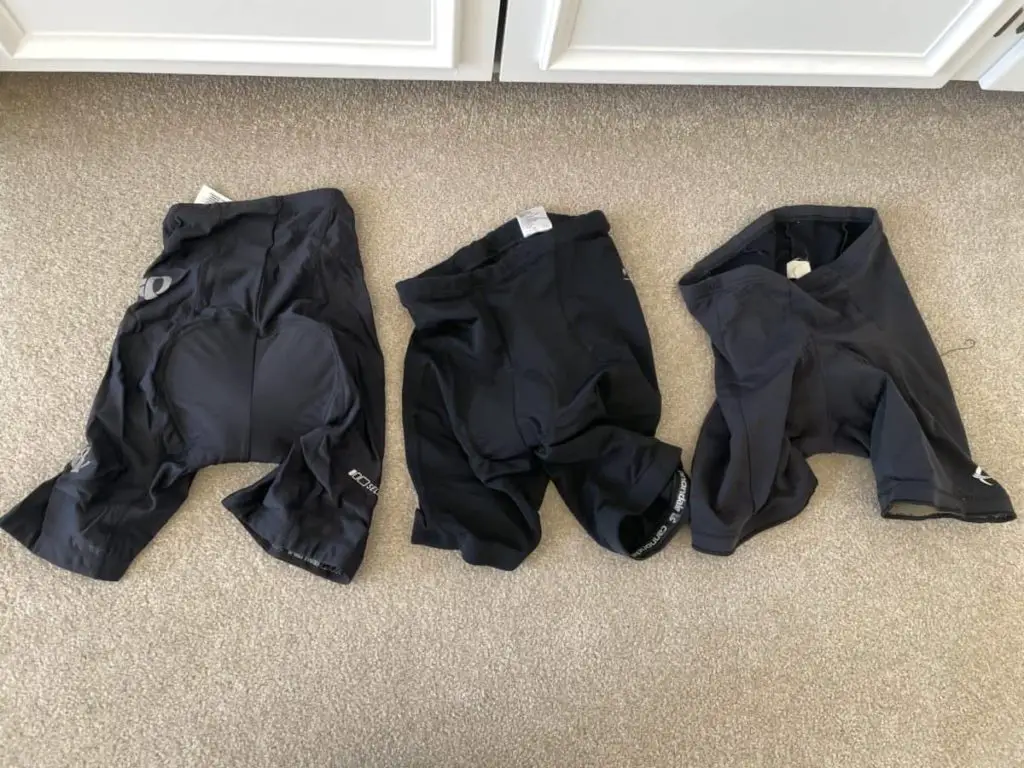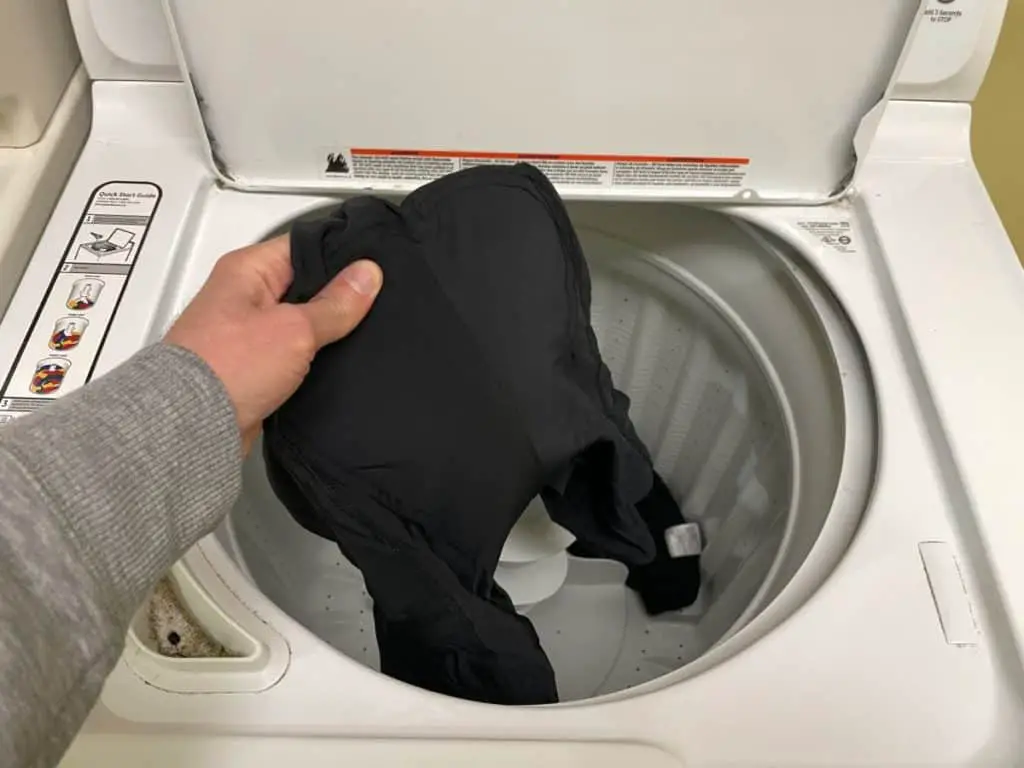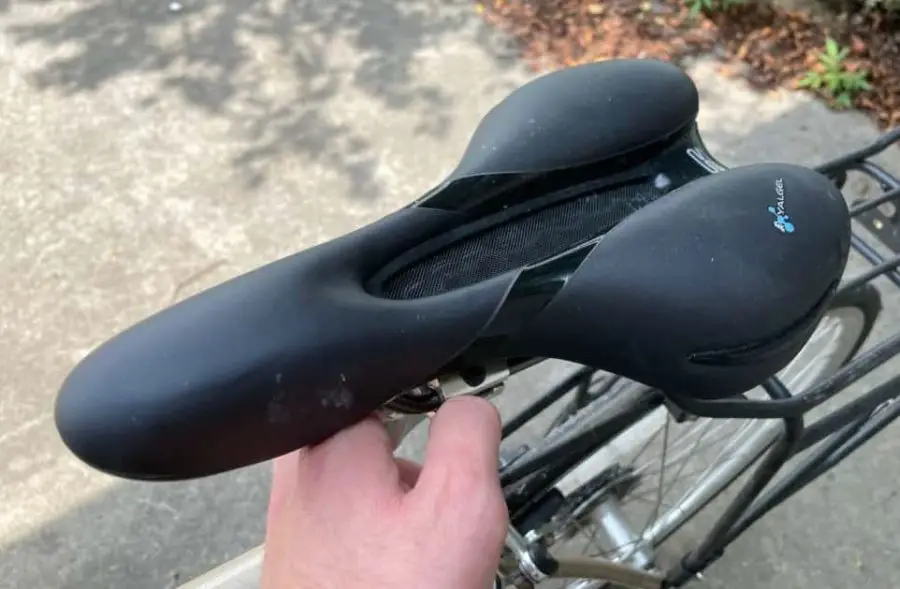Cycling shorts stop chafing – to a point. Bike shorts are designed to reduce friction, wick away heat and moisture, and provide cushioning, which prevents or reduces chafing. But chafing can still occur if your shorts are worn out or the wrong size, or if there are issues with your saddle or overall bike fit.
In this article, we’ll also talk about what to do if your bike shorts aren’t solving your chafing problems, and if you can wear cycling shorts for other activities like running. So if chafing is driving you crazy, you’ve found the right article!

What about for Women?
Because women can be extra sensitive to the effects of chafing on a bike seat, it makes sense for them to invest in cycling-specific shorts. Cycling shorts with a good quality chamois will help protect soft tissue from discomfort, especially on long rides.
In addition, women’s cycling shorts will be designed specifically to fit their individual anatomy. This will ensure that women’s shorts provide the protection they need, where they need it.
A good pair of cycling shorts might be all you need to prevent chafing, although chafing can still happen in some cases.
What if You’re Still Chafing (Even in Cycling Shorts)?
If you are wearing cycling shorts and still find yourself chafing, there could be a number of reasons why. The following solutions may help you:
Choose Good Quality Cycling Shorts
Not all cycling shorts are created equal. It’s certainly fun to score a good deal on a cheap pair of shorts, but cheaper shorts might have seams in weird places, or they may not be made from the high-quality materials needed to wick away heat and moisture while cradling the skin. So if you’re still getting chafing, you might need to invest in a new, higher-quality pair of cycling shorts.
Get the Right Size Shorts
Although cycling shorts are designed to help prevent chafing, you could still have problems if you aren’t wearing the right size shorts. If you are wearing the wrong size shorts, specifically shorts that are too large, they may move around too much, causing more friction. Friction is a significant contributor to chafing and saddle sores.
Replace Worn Out Shorts
On the other hand, if your shorts are old, the chamois and elastic could be breaking down inside. A worn out chamois can no longer do its job of protecting your skin from friction and discomfort. If your shorts no longer fit snugly against your body (and you haven’t lost weight!) it’s time for a new pair.
Skip the Underwear Under There
Another culprit of chafing is wearing underwear under your cycling shorts.
That’s right: you need to ‘go commando’ and skip the underwear when you wear cycling shorts. Wearing underwear with your bike shorts prevents the chamois from sticking to your skin and doing its job.
Cycling shorts are designed to be extra breathable: wearing an extra layer down there could trap heat and moisture between your skin and the chamois, causing extra chafing.
Let Your Skin Recover
If you are already chafing, you may need to take a few days off the bike to recover. Continuing to ride on sore skin can cause it to break down even more, which could lead to saddle sores and infection. You’re probably better off letting your skin heal before you hop back in the saddle.
Don’t fall into the trap of thinking that chafing and discomfort are normal parts of riding a bike. The truth is there are a number of steps you can take to prevent chafing from happening!
How to Prevent Chafing While Biking
1. Find the Right Shorts for You

The first step to prevent chafing is to wear the right cycling shorts for your body. You might need to experiment with a few different brands to find the ones that fit you just right.
Cycling shorts should fit snuggly, especially when you are in a bent-over riding position, but they should never be so tight that they cut off circulation. They need to be just snug enough to prevent the shorts from sliding around and causing friction between the bike and your skin.
2. Change Shorts Often
Don’t wear the same shorts for several days in a row. You need to wash your shorts every time you wear them because sweat and bacteria from your body can get trapped in the fabric and lead to chafing and skin infections.

Also, if you’re going to be doing an extended ride on an indoor trainer, you may want to consider taking breaks to change shorts. Indoor riding tends to be hotter, sweatier, and more likely to lead to skin issues.
3. Don’t Sit in Wet Gear
When you get off the bike, get out of your shorts as soon as possible. Sitting around in sweaty, gross gear can lead to further chafing, not to mention infections or other skin issues. As soon as you can, get out of your shorts, take a shower and dry off to give your skin a chance to breathe.
4. Use a Chamois Cream
Chamois cream is designed to be applied to your chamois area to help reduce friction. In addition, it allows the chamois to stick to your skin better and protects your skin from moisture, both of which can cause chafing and saddle sores.
You can apply chamois cream to your chamois or directly to your skin, whichever you prefer. There are many different kinds of creams available, such as Chamois Butt’r, Assos Chamois Cream, DZ Nuts, UNDRBDR, and Gooch Guard (not sure which name is my favorite!) Some cyclists will even use a general purpose hand and skin cream like Bag Balm as a chamois cream. Just use whatever works best for you!
5. Change Position on the Bike
If you’re riding a trainer or a long flat road, you might find yourself ‘stuck’ in the same position for a long time. Riding in a fixed position can lead to chafing and discomfort. Try to adjust your position from time to time by getting out of the saddle, sitting upright, or getting in the drops to remove the pressure on that one area of your skin.
6. Check Your Saddle

If your saddle is old, worn, too cushy, or the wrong shape for your body, it could be putting pressure on certain areas of your skin, leading to chafing. Check your saddle to make sure it isn’t breaking down, wearing out, or uncomfortable.
Although it seems like a cushier seat would be more comfortable, it isn’t always. A saddle that is too cushy can squish delicate tissue and trap moisture where you don’t want it. So instead, look for a firmer seat that supports your sit bones without putting pressure in the wrong spots.
Check out our previous article on proper gender-specific saddle fit for more information!
7. Check Your Bike Fit
If you feel like everyone is preaching “get a bike fit,” there’s probably a good reason! Your position on the bike can make a big impact on chafing and overall comfort. A good bike fit will make sure you are sitting on the right part of the saddle without putting excessive pressure on delicate tissue. You’ll want your sit bones to be firmly supported without your thighs rubbing on the sides of your bike seat.
8. Be Wary of Hair Removal
Cyclists love to shave their legs, but hair “down there” actually has protective benefits. Hair helps reduce friction, allows moisture to evaporate, and generally protects the skin. So you can help protect yourself from chafing by not removing too much hair there.
9. Talk to Your Doctor
Your doctor can help you pinpoint exactly what is causing your skin to chafe and help you find medical solutions to correct it. And of course, see your doctor if your skin does not heal or becomes infected.
Do Cycling Shorts Stop Chafing When Running?
Cycling shorts are great for cycling, but can you wear them while running? And will they help with chafing while you run?
Cycling-specific shorts are designed to prevent chafing while in a riding position. However, when you’re standing up or walking, they can feel bulky and weird. In addition, they’ll probably be in the way and might actually lead to more chafing while running because the chamois can’t sit in the right spot when you’re more upright.
However, if you want to wear the same shorts for running and cycling, you might invest in a pair of triathlon shorts. They are designed to work while running and cycling shorter distances. They’ll have the same snug fit, but the chamois is designed differently to protect you both on the bike and while running.
